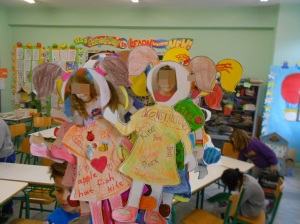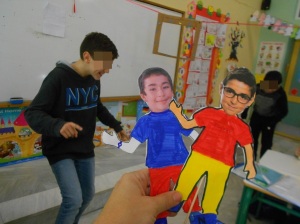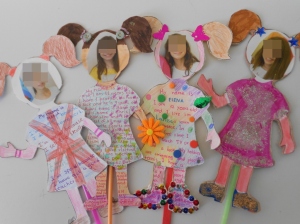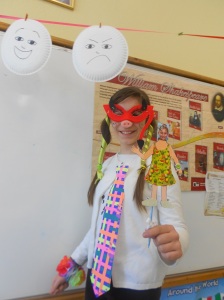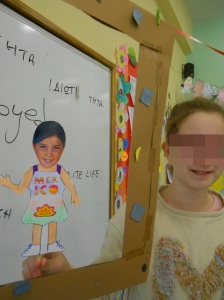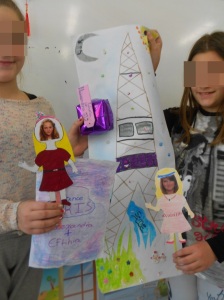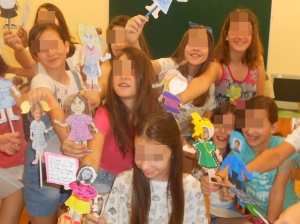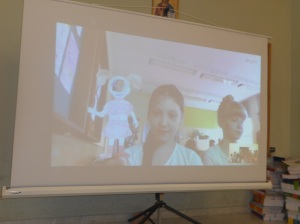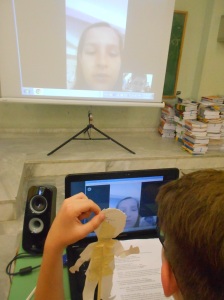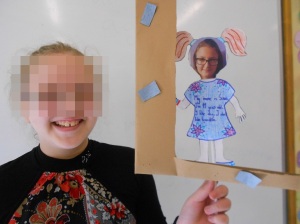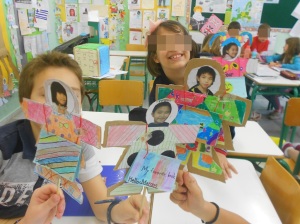My non European colleagues, often ask me what eTwinning is all about!
Well….
eTwinning is a free online community for schools in Europe which allows you to find partners and collaborate on projects within a secure network and platform.
Through participating in eTwinning, your school will be able to:
- enrich learning and motivation of pupils (aged between 3 and 19) and staff
- access high quality professional development and ready-made resources
- raise standards across the whole school community
- gain recognition for your commitment through eTwinning awards and the International School Award.
- Search for an Erasmus+ partner to carry out projects with and apply for mobility funding.
There are, also, special quality labels, for students, teachers and schools!
Quality labels
1.National quality label
A National Quality Label is awarded to teachers with excellent eTwinning projects and indicate that the project has reached a certain level of quality in their country.
2. European quality label
The European Quality Label is a second mark of success and indicates that the project has reached a certain European standard.
3. eTwinning School label
In order to recognise the eTwinning work done at school level, there is now, a new label available – the eTwinning School Label.
The concept of recognition for work done in eTwinning has been in existence since the start with Quality Labels being available to teachers for their projects both at national and European level. However, these labels are applied only to the work of individual teachers in projects. In order to recognise the work done at school level, a new label is now available to apply for – the eTwinning School Label.
The principle behind this new label is that eTwinning wants to recognise and appraise the involvement, commitment, dedication not only of scattered eTwinners, but of teams of teachers and school leaders within the same school.
The concept of attaining the status of an eTwinning School is that of a developmental journey with components that can be objectively assessed. It is not a competition, but rather a progression from one level to the next.
About our project, this year
PuppeTs: Puppet Tourists
Our Flat Puppet Tourist Project, provides an opportunity for students to make connections with students of other European partner schools. Students begin by creating paper “Flat tourists ” whom they sent to our partner schools and ask their pals there to keep a journal for a few months ,on twinspace Forums, documenting the places and activities in which their Flat Tourist is involved. Each country’s Flat Tourist who is mailed to our partners has to be treated as a visiting guest . Partners have to add to their journal, and return them back home,after they have spent a whole school year in the host country .
Partners should also, upload photos,and/or videos, of their puppet tourist’s adventures on twinspace. Additionally, they exchange letters, postcards and souvenirs, from their Flat Tourist’s visits and experiences, by post .
All in all, children exchange ideas, photographs, questions and culture with students abroad, focusing on literacy and citizenship.
AIMS
Our Puppet Tourist project, provides the opportunity to break down classroom walls. Whether the class we connect with is in another local school or another country, it serves the same purpose. It gives our students a chance to see a world outside of their walls. Additionally, our aim is that, the concept of Europe will be understood and our students will become fully aware of the other European partner countries and their ways of life. Citizenship should become a practical ,rather than theoretical, part of the curriculum.
WORK PROCESS
Students begin by creating paper “Flat tourists ” ,whom they sent to our partner schools and ask their pals there to keep a journal for a few months ,on twinspace Forums, documenting the places and activities in which their Flat Tourist is involved. Each country’s Flat Tourist who is mailed to our partners has to be treated as a visiting guest , Partners have and add to their journal, and return them back home,after they have spent a whole school year as well as their Summer, in the host country and have written about their Summer adventures in their Summer diaries .
Partners should also, upload photos/videos , of their puppet tourist adventures . Additionally, they exchange postcards and little souvenirs, from their Flat Tourist’s experiences, by post . The final product of the project ,could be a collaboratively written puppet play or short film script .
The project works on two levels: sharing on twinspace and letter and parcel exchanges, by post.
EXPECTED RESULTS
eTwinning helps us to widen our horizons, reconsider our perspectives, improve self-esteem, increase understanding of different cultures, enhance tolerance and prove that “communication is at the basis of understanding”. So, regardless of the subject matter or the tools we use, the process is always constantly about learning to learn responsibly, actively and collaboratively. The pupils are expected to be inspired and motivated and have a great deal of fun working collaboratively on the many different projects.
Reading the personal responses of their European partners, may give students a greater insight into their partners’ context and worldview. The project can also bring the class together, as the pupils were working as a team. In these difficult times of financial crisis , our students will be able to “travel” abroad, as flat puppets and experience life in a different country and class for a whole school year sharing and comparing our ways of life and making new friends.

















































































































